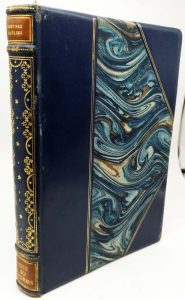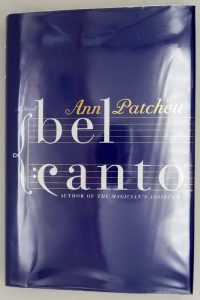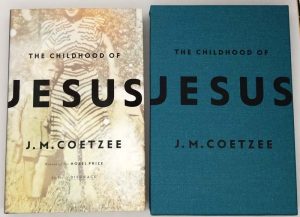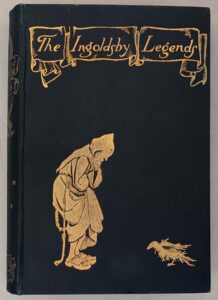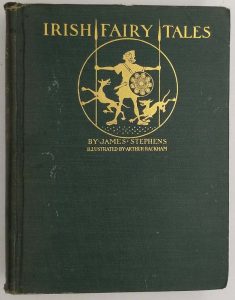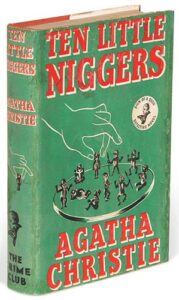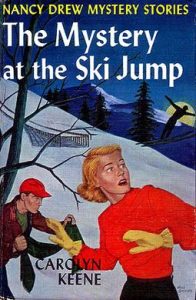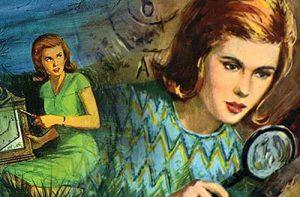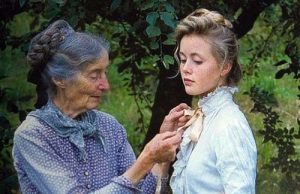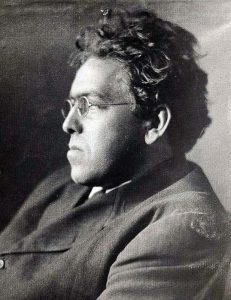The Mystery At Lilac Inn is the fourth volume in the Nancy Drew Mystery Stories series. It was first published in 1930 under the pseudonym Carolyn Keene. Mildred Wirt Benson was the ghostwriter for the 1930 edition.
In 1961, Harriet Stratemeyer Adams extensively revised the novel, creating a completely different story. The original omitted the lead characters from much of the action, the titular inn was only a place where a crime was committed with minor investigatory follow-up, and a domestic help sub-plot was out-of-place in 1961. Ethnic slurs and opinions were removed.
Summary (original edition)
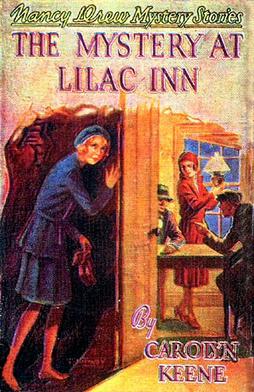
In The Mystery At Lilac Inn, a moonlit garden party at the picturesque Lilac Inn takes a sinister turn when Nancy Drew witnesses her own doppelgänger committing theft in this chilling tale of identity theft and revenge. Tthe story begins with Nancy celebrating her friend Emily Willoughby’s engagement at the riverside inn, only to have the festivities shattered by a series of unnerving events—personal items disappearing from locked guest rooms, the inn’s signature lilac bushes maliciously uprooted overnight, and most disturbingly, multiple guests swearing they’ve seen “Nancy” behaving strangely in areas she never visited.
The mystery deepens as Nancy discovers the inn’s financial troubles coincide with suspicious damage to incoming supply shipments, while the nearby river shows evidence of nighttime dredging operations. Her investigation reveals how the inn’s elegant French blueprints conceal hidden passages perfect for staging “ghostly” appearances, and why someone has been systematically destroying the property’s reputation. The danger escalates when Nancy is drugged during afternoon tea and awakens in a waterlogged rowboat adrift on the current, her hands stained with dirt she never touched.
The 1931 original pulses with post-Crash anxiety—Nancy analyzes Depression-era bank records to uncover embezzlement, recognizes how the floral sabotage follows insurance claim patterns, and ultimately exposes a revenge plot spanning generations. Unlike later revisions, this version retains Nancy’s terrifying confinement in the inn’s flooded basement, where rising waters force her to decipher the building’s architectural secrets or drown, and the heartbreaking revelation that the villain’s grievances stem from Jazz Age financial ruin.
Lilac Inn itself stands as a monument to crumbling gentility—its fragrant blossoms masking decay, its cheerful facade hiding structural vulnerabilities, much like the smiling staff conceals dangerous alliances. The mystery’s resolution hinges on Nancy recognizing how scent can be both weapon and clue—the faintest hint of pipe tobacco lingering where no smoker has walked, the disturbing absence of lilac perfume on her impersonator.
Nancy Drew #4 – The Mystery at Lilac Inn First Edition Book Identification
Only the first few printings of the first/second year are included. Printings codes are based on the Farrah Guide, 12th printing. Please refer to the guide for later printings.
Note: Glossy+: Glossy frontis + 3 glossy internals.
| Printing | Frontis | Copyright Page | Rear Book Ads |
|---|---|---|---|
| 1930A-1 | Glossy+ | Nancy Drew #1-4 | Hardy Boys #1-9/Outdoor Girls #1-20/Blythe Girls #1-10 |
| 1930B-2 | Glossy+ | Nancy Drew #1-4 | Hardy Boys #1-9/Outdoor Girls #1-20/Blythe Girls #1-10 |
| 1930C-3 | Glossy+ | Nancy Drew #1-4 | Hardy Boys #1-9/Outdoor Girls #1-20/Blythe Girls #1-10 |
Nancy Drew #4 – The Mystery at Lilac Inn First Edition Dust Jacket Identification
ao: Among other titles.
| Printing | Front Flap | Rear Cover | Rear Flap | Reverse/Inside | Format |
|---|---|---|---|---|---|
| 1930A-1 | Nancy Drew #1-4 | Amy Bell Marlowe(10) | Blythe Girls #1-10 | List of G&D fiction | 1 |
| 1930B-2 | Nancy Drew #1-4 | Amy Bell Marlowe(10) | Blythe Girls #1-10 | Nancy Drew #1-3 ao | 1 |
| 1930C-3 | Nancy Drew #1-5 | Amy Bell Marlowe(10) | Blythe Girls #1-10 | Nancy Drew #1-3 ao | 1 |
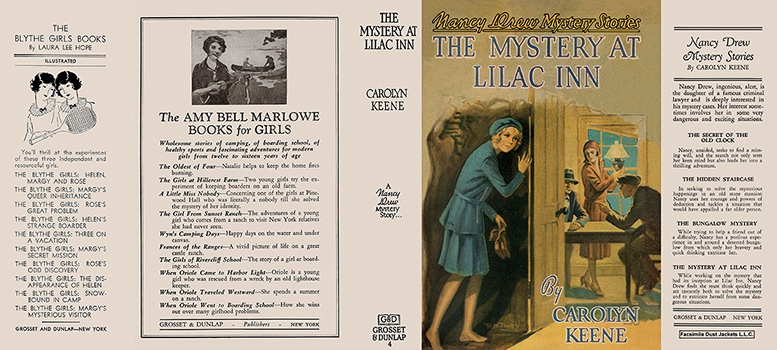
Reference
- Farah’s Guide to Nancy Drew, 12th printing
